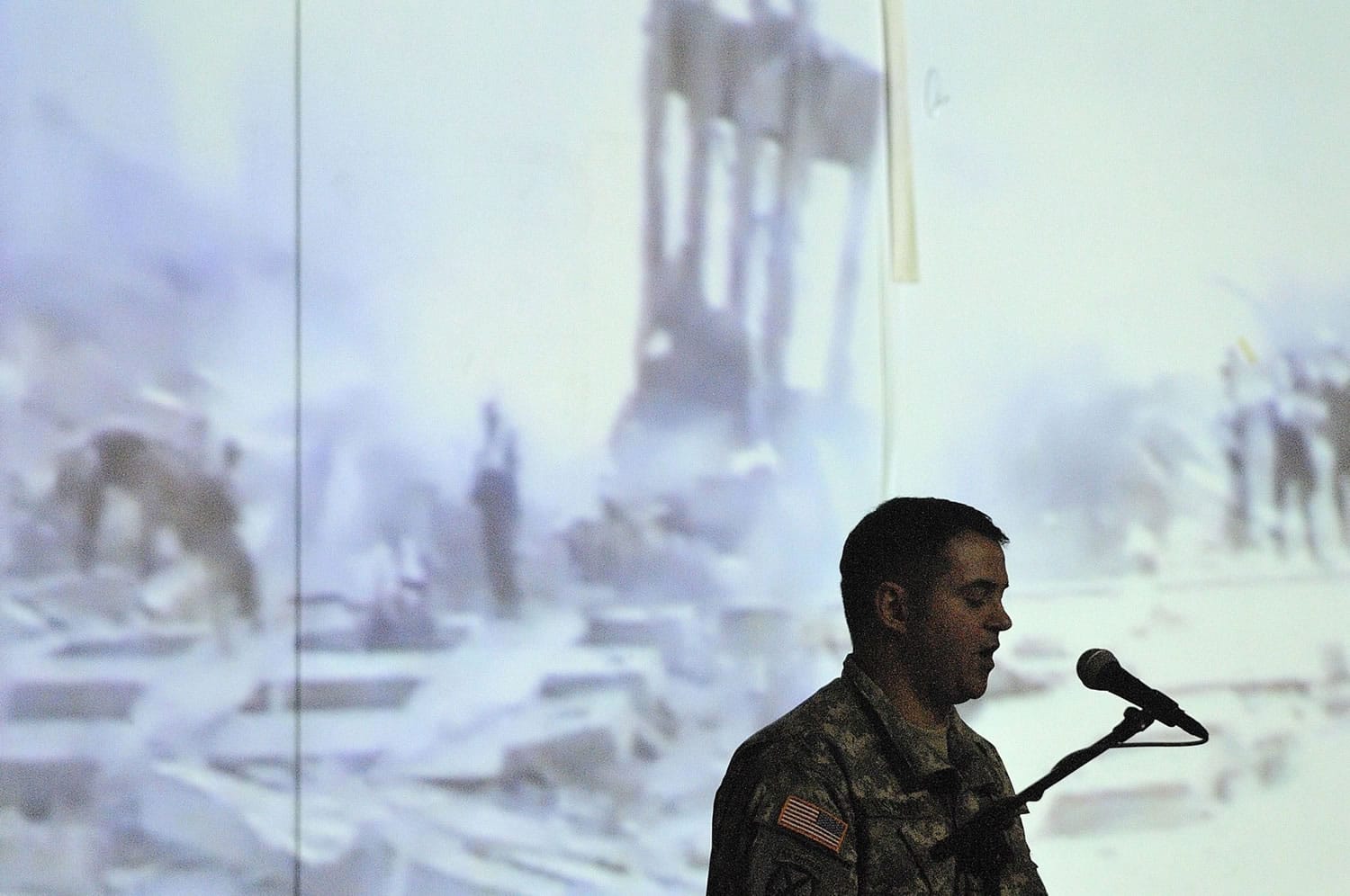Liam Clancy woke up on Sept. 12 near New York’s Ground Zero, covered in dust and ash after spending the night sleeping in his Jeep Wrangler.
As an Army captain specializing in nuclear, chemical and biological warfare, Clancy was among the responders who raced to the scene of the terrorist attacks on Sept. 11, 2001.
Emergency officials were still trying to figure out what had happened when Clancy was ordered to the World Trade Center site.
On Monday — his 10th anniversary of waking up amid the rubble of the Twin Towers — Clancy told more than 400 local students about being part of the 9/11 response.
He was on leave 10 years ago and staying with his parents in Connecticut when hijackers flew two jetliners into the World Trade Center towers.
There were concerns that biological weapons might have been aboard the aircraft, Clancy explained during an assembly at Pleasant Valley Middle School, where his daughter Katelynn is a student. His son, Thomas, attends adjacent Pleasant Valley Primary in the Battle Ground School District.
“Anthrax was the big concern,” he said.
So Clancy raced to Manhattan, doing 90 mph in his Jeep.
He couldn’t find any trace of biological or radiological weapons, but Clancy — who’d had urban search-and-rescue experience following the 1995 Oklahoma City bombing — didn’t want to leave. He spent the rest of that week volunteering for the recovery effort.
Friend killed
“I had friends and family in New York, and some worked in the World Trade Center. I had friends in the Pentagon, and one of them was killed,” he said.
“To be part of the search and rescue was very important,” Clancy said. “We thought there could be tens of thousands of people trapped.”
And 9/12 was a significant day in that process, Clancy said. While the search-and-rescue effort continued for two weeks, “The end of Sept. 12 was when the last survivor was pulled from the rubble,” he said.
During his presentation, Clancy displayed streaming video of first responders as well as still photographs of the recovery effort.
When a photo popped up showing a bucket brigade of workers clearing rubble, Clancy said: “I’m in that image, somewhere.”
It was a line of workers hundreds of feet long, he said, with people passing along 5-gallon buckets fulled with debris.
“In some cases, you’d find evidence of victims: — remains or personal effects,” he said.
Clancy’s work site was near a makeshift medical center/morgue. After that final survivor was rescued on Sept. 12, 2001, it was the rescue workers who got medical treatment.
“Imagine being in a room like this and not being able to see your hand in front of your face,” he said. “Ash and dust clogged your eyes and lungs.”
Workers would take occasional breaks to have the ash flushed from their eyes, to get some oxygen, and to have a medic treat their cuts.
‘Ow! This hurts!’
In a twist of fate, it was a 9/11-related injury that eventually ended Clancy’s combat deployment to Afghanistan.
“I got caught under some rubble working outside the World Financial Center,” he said. “There was so much machinery moving around, and things were always falling. I was hit by a piece of rebar and concrete.”
His reaction: “Ow! This hurts!”
Since there was no sign of a broken bone, Clancy didn’t consider it a serious injury.
Clancy learned differently when Operation Enduring Freedom took him to Afghanistan. He realized he no longer could carry his 120-pound pack.
That chunk of concrete had actually caused serious internal damage, requiring surgery.
But his time as a responder in New York also opened up a wonderful chapter in his life, Clancy said. That’s where friends introduced him to his future wife, Linda, who had been in the World Trade Center on 9/11.
“I was in Tower 1 at about 7:30 a.m. for a meeting,” Linda said. “The meeting was canceled, so I didn’t go up. I went to breakfast.”
The area soon became a disaster scene. Linda Clancy summarized how she and her future husband reacted to 9/11:
“I ran out and he ran in.”




